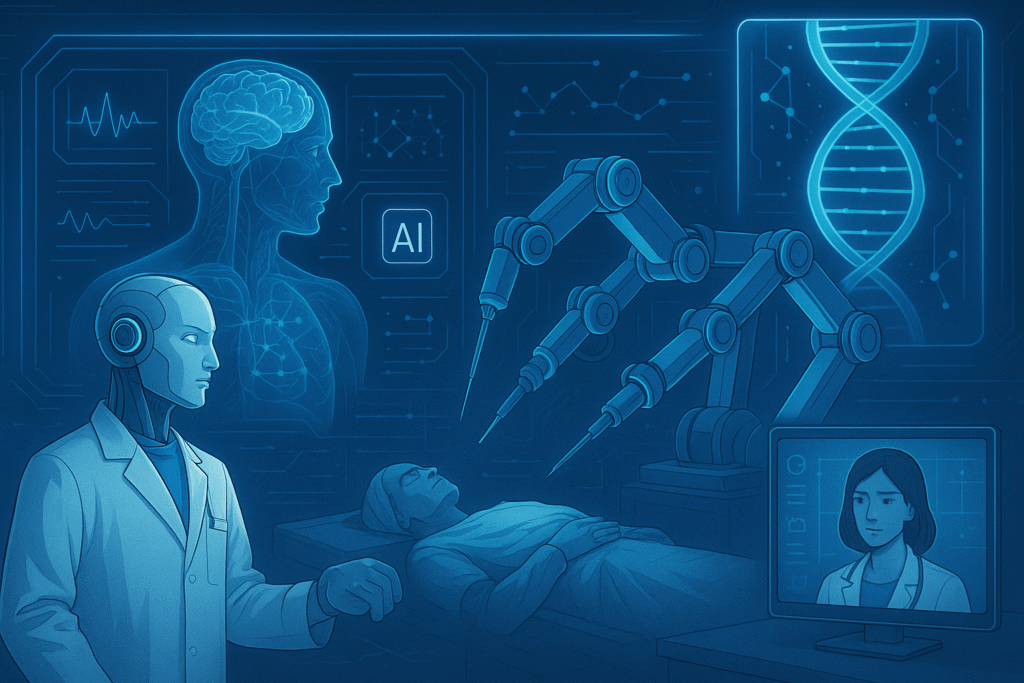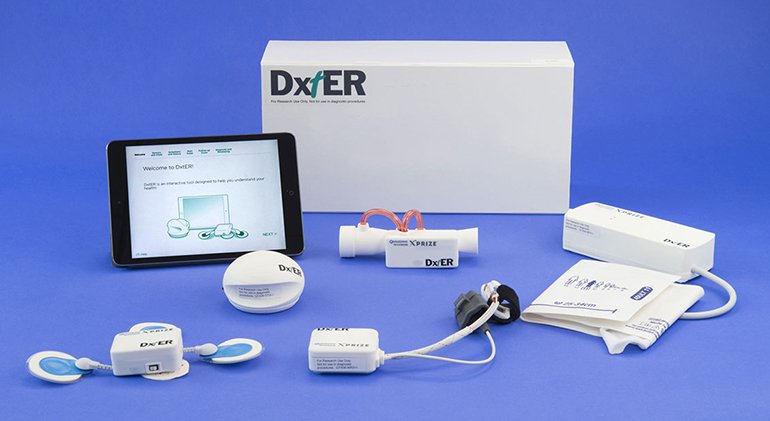This is GizmoMD
Dear Friends, It’s been a while. If you’ve been wondering what happened to Medgadget — you’re not alone. It’s been a few years since anything was published, and like many of you, I’ve missed the excitement of discovering and sharing the latest in…
The Latest
NASA-Inspired Low-Vibration Belt Lowers Bone Fracture Risk
A new FDA-approved low-vibration belt, Osteoboost, is offering a drug-free intervention for osteopenia, a condition characterized by low bone density. Developed by Bone Health Technologies, the belt applies 30 hertz of oscillations per second to stimulate bone cells, mimicking the effects of weight-bearing exercise. Clinical trials showed an average 85% reduction in bone loss among study participants. The technology behind Osteoboost originates from NASA research on counteracting bone loss in astronauts exposed to zero gravity. By stimulating osteocytes, the belt encourages the formation of new bone matter while recycling old cells. This innovation provides a convenient and effective solution for…
Breathalyzer Device Could Improve Diabetes Management
A new breathalyzer device developed by Indiana University researchers offers a non-invasive alternative for monitoring blood sugar levels. Inspired by diabetes alert dogs, the device detects specific molecules in breath that correlate with hypoglycemia, providing real-time glucose readings without the need for finger pricks or implanted sensors. This innovation could make diabetes management more accessible and less intrusive for millions of patients. The device, called Isaac by PreEvnt which was developed in collaboration with the Integrated Nanosystems Development Institute at IU Indianapolis, uses nanoscale sensors to identify breath biomarkers associated with blood sugar fluctuations. It is designed to be worn…
Portable Device Detects Rare Genetic Mutations in Minutes
Rutgers University engineers have developed a portable device capable of detecting rare genetic mutations from a single drop of blood in just 10 minutes. The device, which combines allele-specific polymerase chain reaction (ASPCR) with electrical impedance detection, was successfully tested on samples from patients with hereditary transthyretin amyloidosis, a genetic condition linked to heart failure. Unlike traditional genetic tests that take days or weeks, this new technology offers rapid, point-of-care mutation detection. The device amplifies nucleic acid segments and analyzes DNA sequences using microfluidic chips, making it highly accurate and efficient. Researchers aim to expand its capabilities to detect multiple…
Smartphone App Accelerates Huntington’s Disease Drug Development
A new smartphone-based digital testing system is poised to transform Huntington’s disease research by providing a more sensitive and reliable way to track disease progression. Developed by University College London and Roche, the Huntington’s Disease Digital Motor Score (HDDMS) quantifies motor function through five simple movement tests, including balance assessment and finger tapping. By regularly performing these tests at home, patients can generate real-time data that helps researchers monitor disease progression. The HDDMS system enhances clinical trials by detecting even small changes in symptoms, allowing researchers to evaluate potential treatments more efficiently. This increased sensitivity means fewer participants are needed…
Dual-Laser Photothermal Therapy Strategy for Breast Cancer
A new dual-laser photothermal therapy (DLPTT) strategy is revolutionizing breast cancer treatment by enhancing tumor ablation while minimizing damage to healthy tissue. Developed by researchers from the Shenzhen Institutes of Advanced Technology and their collaborators, this approach uses near-infrared photothermal agents with aggregation-induced emission properties to precisely target cancer cells. The therapy operates in two stages: an initial short 808 nm laser irradiation weakens tumor resistance, followed by a longer 1,064 nm laser treatment that effectively eliminates residual cancer cells. The DLPTT strategy integrates second near-infrared fluorescence imaging and photoacoustic imaging, allowing for deeper tissue penetration and clearer tumor localization.…
Artificial Pancreas Uses Digital Twin Tech to Improve Diabetes Control
A groundbreaking artificial pancreas system developed by the University of Virginia is leveraging digital twin technology to enhance diabetes management. This adaptive biobehavioral control system fine-tunes insulin delivery every two weeks, allowing users to test different settings in a virtual environment before applying them in real life. In a six-month study, participants using the technology saw an increase in time spent within a healthy blood-sugar range, rising from 72% to 77%, alongside a small but meaningful drop in average blood-sugar levels. The digital twin technology creates a personalized simulation of each user’s metabolic system, enabling both the artificial pancreas and…
FoodTech: How Engineered Food and Gastronomical Gadgets Affect Your Health (November 2017)
Note to readers: These posts are some of my favorite pieces from my time with Medgadget—stories that still resonate, even if they’re a bit dated. For now, consider this a placeholder, a glimpse into the past, until it’s replaced with fresh, exclusive GizmoMD content. Thanks for reading and I hope you enjoy! Here on GizmoMD, we cover a lot of groundbreaking devices that save lives and improve health. But one often overlooked topic deals with something each and every one of us use every day: food. Food is essential for our survival, and one can say it interacts with our bodies…
GizmoMD Tours Poland and Its Medtech Scene (October 2019)
Note to readers: These posts are some of my favorite pieces from my time with Medgadget—stories that still resonate, even if they’re a bit dated. For now, consider this a placeholder, a glimpse into the past, until it’s replaced with fresh, exclusive GizmoMD content. Thanks for reading and I hope you enjoy! On September 1, 1939, German forces under the command of Hitler invaded Poland, marking the official start of World War II. Hundreds of thousands of Polish civilians were massacred, and much of the country, including 80% of the capital city of Warsaw, was completely leveled. But the country,…
GizmoMD Visits ‘Body Worlds Decoded’ at the San Jose Tech Interactive (December 2017)
Note to readers: These posts are some of my favorite pieces from my time with Medgadget—stories that still resonate, even if they’re a bit dated. For now, consider this a placeholder, a glimpse into the past, until it’s replaced with fresh, exclusive GizmoMD content. Thanks for reading and I hope you enjoy! The Tech Interactive, a.k.a. “The Tech” is a special attraction in San Jose, California. With beginnings reaching as far back as 1978, The Tech has grown and evolved with the ever-changing Silicon Valley landscape and has been a de facto showcase for some of the best of Silicon Valley’s history…
Bogotá, Colombia – A Study of Medtech Contrasts (July 2016)
Note to readers: These posts are some of my favorite pieces from my time with Medgadget—stories that still resonate, even if they’re a bit dated. For now, consider this a placeholder, a glimpse into the past, until it’s replaced with fresh, exclusive GizmoMD content. Thanks for reading and I hope you enjoy! Chances are, when you think of the country of Colombia, the two “C’s” come to mind: cocaine and crime. While this may have been true 30 years ago, the country has come a long ways in terms of eliminating drug and crime issues and shedding its bad reputation.…

















